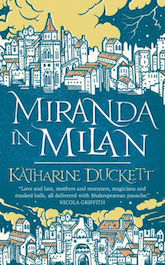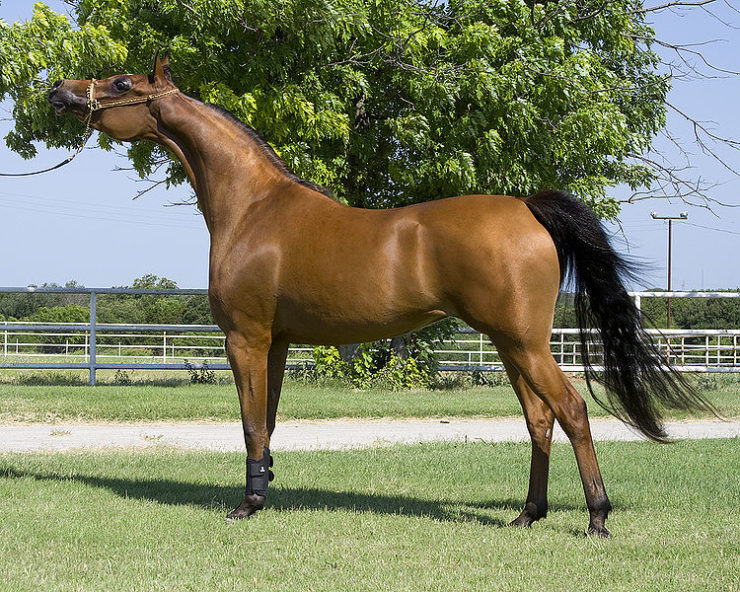Purpose-breeding is a term often used in animal husbandry to refer to breeding an animal for a particular purpose. Not just breeding “on purpose”—with planning and intention rather than just letting the animals sort it out—but for a particular use.
That use doesn’t necessarily need to be functional. You can breed a horse for halter showing and end up with something that may not be ridable or driveable and might not be all that sound for standing around the pasture, either. Or you can breed him for color or size or a particular shape of head.
Wherever human whim and fashion take you, you’re sure to find someone who’s carried that to an extreme. Because if muscles are good, why not so many the horse can’t walk? Or if a dramatically dished face wins those bigtime show classes and sells for buckets of money, why not make it even more dramatic? Ultimately it all maxes out, or a new fashion manifests and all the money pours into that instead.
That’s the extreme end of what happens when humans mess around with animal genetics. On the other side of the question, if you ask a breeder why they breed selectively, they’ll usually answer, “To improve on what we have in front of us.” I actually started the sentence with “To improve the breed,” but that’s another nuance, which I’ll get to in a bit. Here, I’m looking at the heart of the matter, and that is a desire to make crosses that come closer to the ideal than either parent. What that ideal is can be distorted as I described above, but when the breeder keeps as close an eye on function as on form, they up the chances of producing better animals.
All of this, prior to the discovery of the genetic code, was done by observation, scrupulous record-keeping, and straight-out intuition. A breeder then (and frankly now) would look at the options available, study their ancestors within several generations, make note of what each individual tended to produce in previous crosses, and especially note which ones improved on themselves and the animals they were bred to. If they had an individual of top quality who reproduced him or herself, they would call that one “prepotent” especially if it was a stallion, and expect that he would improve most of the mares he was bred to.
Buy the Book


Miranda in Milan
And so they would go from generation to generation, experimenting with outcrosses, learning from experience when to inbreed and when to avoid it, and removing poor results or poor producers from the mix by refraining from breeding them—which, if they were males, meant gelding them and selling them. Geldings in the West have become the go-to using horse, the steady riding or driving or agricultural model who won’t be passing on his genes (or trying to); one famous Arabian breeder actually came out and said that the real purpose of the modern breeder is to produce riding geldings. She gelded almost every colt within a few weeks of birth, only kept what she considered to be the best. Fillies got more of a pass, but if they didn’t produce well, they went on the sales list, too.
She produced a lot of very well-regarded horses, and they all had a look that the knowledgeable could spot, a particular shape to the body and a particular way of going. She’s gone now, but her legacy lives on in a large number of Arabians who can perform as well as look beautiful.
Arabians are a breed (regulated by pedigree) as well as a type (bred to a particular standard), and there’s a lot of emphasis on purity—they’re expected to have Arabians, and only Arabians, in the pedigree as far back as it goes. This is a matter of great pride in the breed, but it has some odd connotations now. The whole idea of “breed purity” is a little too close to “racial purity” for comfort.
As we’ve cracked the genetic code, the concept of a breed as a curated collection of animals who share the same ancestry and physical traits has lost a little of its reason for being. Breeding within a known population, when you can’t isolate the genes that create the traits you’re looking for, is the surest way to get them. Even there, you get mutations, or crosses just don’t work out—recessives crop out, traits you want don’t appear while those you don’t want persist. Success is not guaranteed.
But if you can map the genes, you don’t have to guess. This is a good thing when dealing with toxic mutations—you can test for it, and refrain from breeding carriers. Sometimes with major screaming and political fallout if there’s a lot of money tied up in the carriers, but it can be done.
Another thing that’s become more of a priority in recent years is the idea of genetic diversity. Too small a gene pool threatens the integrity of the breed: Genetic faults become more concentrated, sometimes to the point that it’s difficult to find any individual who doesn’t carry some combination of problems.
Breeders figured this out before they ever knew about genes, but more knowledge makes it harder to make excuses. “But the bloodlines are so rare!” And so full of problems. “But we’re a pure breed! We can’t sully it with outsiders!” So it will go extinct on its own, as more and more nonviable foals are born. “But history! The breed will die out!” It will anyway, if it doesn’t get an infusion of fresh genes.
Even breeds with a large number of individuals can fall into the restricted-genepool trap, through excessive breeding to the same big-money stallions. When the majority of animals in the breed have the same few names in their pedigrees, it doesn’t matter after there are a few hundred or a few hundred thousand. Genetically, the breed has a problem.
I’m old enough to know when “purebred” was a huge selling point, and I still see the allure. There’s something about a pedigree full of illustrious names—my medievalist-historian self gets a little shiver at the thought.
But in terms of the preservation of the species, I have to hope the breed allows outcrosses, even if it won’t admit them to the main registry. One way to do it is to work within a certain expanded pool—Appaloosas admitting Quarter Horses and Thoroughbreds as long as they carry Appaloosa color traits, racing Quarter Horses accepting Thoroughbreds. And even the Arabian, the purest of the pure breeds according to its own marketing, is a strong proponent of the Half-Arabian, believing that Arabian genes can improve whatever they’re mixed with. (And in fact a lot of modern breeds have infusions of Arabian, including the Thoroughbred.) It has a Half-Arabian registry, plenty of show classes and incentives, and solid support for breeding non-Arabians to Arabians.
What it all comes from is both fashion and utility. Different breeds originated in different needs. The Arabian is an adaptation to the deserts from which the original stock came. The various breeds of draft horses were bred to pull and to plow, with some also having been bred for size and strength to carry an armored knight. Focus on bloodlines tends to come late in the game, when there’s energy and time to worry about prestige and status. In the early days, it’s about producing animals who can do the job they’re needed for. And that can get a little chaotic before it settles down to a selected pool of breeding animals.
For a living example of this process in action, I’m going to step outside the horse world into our other close companion animal, the dog. One of my other fandoms is sled-dog fandom, and that means I’ve learned about a non-breed of dog that is nevertheless a striking example of genetics in action.
The Alaskan husky is sometimes referred to as a “sled mutt.” It’s a seemingly random combination of native Alaskan village dogs, Gold Rush imports, and in recent years, infusions of pretty much any breed that might add speed, size, and as the Arctic warms, a shorter coat and higher heat tolerance (for values of “heat” that include anything over 0F/-18C). As long as it can handle the cold, work together in a team, and pull a sled miles and miles, it’s a sled dog. Though the guy who ran Standard Poodles caused race rules to be changed to require that the dog be a “Northern breed,” so it’s not exactly anything goes.
But what’s really, really interesting about this supposedly mixed breed is that genetically, it’s actually kind of not. All of these dogs, some of whom don’t look like the standard view of huskies at all (Hello, is that a Lab mix? A pointer? Wait, is there greyhound in there? Did somebody slip a hound into the kennel?), carry the same complex of genes that makes them world-class supermarathoners. They process fat and protein differently than any other mammal, they have levels of endurance that nothing else can match, and regardless of what they look like on the outside, on the genetic level they’re all clearly related.
In its way it’s the opposite of breeding for physical appearance. By breeding specifically for ability to run (and within that, for a distinction between sprinters and marathoners), the result is an animal that can look like just about anything, but its genes are all strikingly similar. People were doing this for a purpose, to make better, faster sled dogs with greater endurance, and ended up with basically a superdog.
I wonder if, having discovered the speed gene in racehorses, racing enthusiasts may try this with horses. They probably won’t: Horses are far more expensive to keep and breed far more slowly than dogs, and there’s an awful lot of money and power tied up in the Thoroughbred with its rigorously controlled breed registry. Plus there’s the persistent pull toward breeding to a very limited number of popular, high-achieving stallions. But it’s an intriguing concept. Eventually I’m sure we’ll be straight-out manipulating genes to get the traits we want, probably to the point that the results don’t look or act anything like what we now call a horse.
Top image: Arabian Horse. Photo by Ealdgyth [CC BY-SA 3.0], via Wikimedia Commons.
Judith Tarr is a lifelong horse person. She supports her habit by writing works of fantasy and science fiction as well as historical novels, many of which have been published as ebooks by Book View Cafe. She’s even written a primer for writers who want to write about horses: Writing Horses: The Fine Art of Getting It Right. Her most recent novel, Dragons in the Earth, features a herd of magical horses, and her space opera, Forgotten Suns, features both terrestrial horses and an alien horselike species (and space whales!). She lives near Tucson, Arizona with a herd of Lipizzans, a clowder of cats, and a blue-eyed dog.










